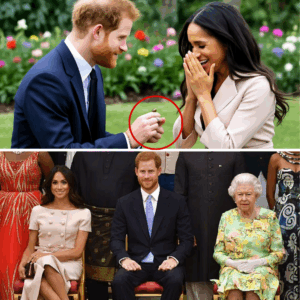The global sensation Squid Game is gearing up for its third and final season, set to premiere on Netflix on June 27, 2025. After a record-breaking Season 2 that drew 68 million views in its first 72 hours, anticipation is at an all-time high for the conclusion of Seong Gi-hun’s harrowing journey. A major highlight teased in the Season 2 post-credits scene is the return of Young-hee, the iconic motion-sensing doll from “Red Light, Green Light,” now accompanied by her “boyfriend,” Cheol-su. This new pairing has sparked widespread curiosity and speculation among fans. Drawing from official announcements, creator insights, and fan discussions on platforms like X, this article delves into Young-hee and Cheol-su’s appearance in Season 3, exploring the cultural significance, narrative implications, and symbolic meaning behind their partnership.
Young-hee and Cheol-su: A Cultural Legacy
Young-hee, the chilling animatronic doll first introduced in Season 1, has become a global symbol of Squid Game’s deadly nostalgia. Modeled after a character from South Korean textbooks of the 1970s and 1980s, she embodies the eerie juxtaposition of childhood innocence and brutal violence. With her orange pinafore, pigtails, and motion-detecting eyes that turn red when spotting movement, Young-hee oversaw the “Red Light, Green Light” game, responsible for 255 deaths in the 33rd Squid Game of 2020 alone. Her design, inspired by creator Hwang Dong-hyuk’s daughter’s hairstyle, taps into the collective memory of South Korean audiences, evoking a sense of familiarity twisted into terror.
Cheol-su, introduced in the Season 2 post-credits scene, is Young-hee’s male counterpart and “boyfriend.” Like Young-hee, he is named after a character from the same Korean textbooks, where the duo often appeared together in stories teaching basic morals and reading skills. In Western terms, Young-hee and Cheol-su are akin to Jack and Jill—archetypal childhood figures representing innocence and companionship. Cheol-su, depicted in a green-striped shirt and cap, was teased by Hwang as early as June 2022, when he announced the show’s renewal. A Netflix poster released on January 1, 2025, confirmed their joint appearance, with the caption “YOUNG-HEE & CHUL-SU. SEASON 3, COMING IN 2025. ONLY ON NETFLIX,” sending fans into a frenzy.
The Narrative Role of Cheol-su’s Arrival
Cheol-su’s introduction in Season 3, as confirmed by Hwang in an interview with Entertainment Weekly, marks a significant evolution in the games’ design. The post-credits scene of Season 2 shows players 096, 100 (Im Jeong-dae), and 353 entering an arena where Young-hee and Cheol-su stand side by side, with a train signal flashing red and green lights. Hwang described this as a “sneak peek” of Season 3’s “most exciting game,” hinting at a reimagined version of “Red Light, Green Light.” The presence of both dolls suggests a heightened level of danger, potentially monitoring players from multiple angles to eliminate strategies like hiding behind others, a tactic used by players such as Cho Sang-woo in Season 1.
Fan theories on platforms like X and Reddit propose various possibilities for the new game. One popular theory suggests a “Jack and Jill” inspired challenge, where players might face a task involving teamwork or a symbolic “hill” to climb, only to meet a deadly fate akin to the nursery rhyme’s tragic ending. Another theory posits a “trolley problem” scenario, where players must make moral choices under the dolls’ watchful eyes, possibly involving train tracks as hinted by the signal lights. While these remain speculative, Hwang’s comment about a “romantic duet” between the dolls before their “deadly look” suggests a coordinated, possibly theatrical element to their role, amplifying the psychological terror for the players.
Narratively, Cheol-su’s arrival aligns with the escalation of Gi-hun’s struggle. After failing to stop the games in Season 2, Gi-hun (Lee Jung-jae) is described by Hwang as a “changed man at a critical crossroads.” The introduction of a second doll could symbolize the doubling of his challenges, reflecting his fractured psyche or the increased power of the game’s organizers. The Front Man, Hwang In-ho (Lee Byung-hun), whose backstory will be explored in Season 3, may have introduced Cheol-su to tighten control over the players, ensuring no loopholes remain for rebellion. This fits the series’ pattern of evolving its games to mirror the growing stakes, as seen with the new games in Season 2 like “Spinning Top” and “Jegichagi.”
Symbolic and Thematic Implications
Beyond their practical role in the games, Young-hee and Cheol-su carry profound symbolic weight. In Korean folklore and educational contexts, they represent innocence, friendship, and moral lessons—values that Squid Game subverts to critique societal inequalities. Young-hee’s deadly gaze in earlier seasons symbolized the loss of innocence in a capitalist system that preys on the desperate. Cheol-su’s addition deepens this metaphor, potentially representing the complicity or partnership within oppressive systems. Together, they may embody the inescapable nature of societal traps, where even relationships—symbolized by their “boyfriend-girlfriend” dynamic—become tools of control and destruction.
The pairing also reflects the series’ exploration of duality and balance. Young-hee, with her feminine design, and Cheol-su, with his masculine appearance, mirror the yin-yang of survival and sacrifice that defines Squid Game. This duality could parallel Gi-hun’s internal conflict—whether to persist in his mission to destroy the games or succumb to despair, as hinted by Hwang. Additionally, their presence might underscore the theme of childhood memories turned sinister, a recurring motif in the series. For South Korean audiences, the nostalgia of Young-hee and Cheol-su is a stark reminder of how innocence is corrupted by systemic greed, a message that resonates globally as the show critiques modern capitalism.
Fan Reactions and Cultural Impact
The announcement of Cheol-su’s debut has generated significant buzz. Posts on X reflect a mix of excitement and apprehension, with users exclaiming, “SO EXCITED!! 2025 gonna be crazyyy,” and “WE ARE SO HYPE.” Others have speculated about the dolls’ roles, with theories ranging from a “hide and seek” game to a “train track crossing” variation of “Red Light, Green Light.” The dolls’ cultural significance has also been noted, with fans appreciating the nod to Korean childhood stories, similar to how Jack and Jill resonate in Western culture.
Young-hee’s legacy as a cultural icon is already well-established. Since Season 1, replicas of her have appeared worldwide—from Sydney, Australia, for Halloween 2021 to Birmingham and Manchester in the UK. In the Philippines, a replica was even used to deter jaywalking. Cheol-su’s introduction is poised to amplify this impact, potentially creating a new wave of merchandise and pop culture references. A Young-hee vinyl figure released in January 2022 was a bestseller, and fans are already anticipating similar memorabilia for Cheol-su.
Why Cheol-su Was Introduced
Hwang’s decision to introduce Cheol-su in Season 3, rather than earlier, appears strategic. Originally, Seasons 2 and 3 were conceptualized as one long season, but the split allowed Hwang to save Cheol-su for the final act, heightening the stakes for the conclusion. In a 2022 letter to fans, Hwang teased Cheol-su’s arrival, suggesting a long-planned role in the narrative arc. From a storytelling perspective, Cheol-su’s presence ensures that Season 3 feels distinct, offering a fresh twist on the familiar “Red Light, Green Light” game while maintaining its iconic status as the opening challenge, a tradition across all seasons.
Thematically, Cheol-su’s introduction serves to deepen the series’ critique of systemic oppression. By pairing him with Young-hee, Hwang may be highlighting the collaborative nature of exploitative systems—how multiple forces work together to trap individuals, much like the game’s organizers and the VIPs. This also mirrors Gi-hun’s growing realization of the complexity of his fight; just as he faces new emotional and physical challenges, the games evolve to become more formidable. Cheol-su’s role as Young-hee’s “boyfriend” adds a layer of irony, turning a symbol of companionship into a harbinger of death, further emphasizing the show’s dark commentary on human relationships under capitalism.
Looking Ahead to Season 3
As Squid Game Season 3 approaches, Young-hee and Cheol-su are set to be central figures in what Hwang has promised will be a “fitting end” to Gi-hun’s journey. Their joint appearance in a reimagined game, likely a more lethal version of “Red Light, Green Light,” will test the players’ physical and moral limits, reflecting the series’ core themes of survival, morality, and resistance. For Gi-hun, facing these dolls may symbolize his final confrontation with the systems that have haunted him since Season 1—a battle that will determine whether he can reclaim his humanity or be consumed by the game’s cruelty.
The cultural and symbolic weight of Young-hee and Cheol-su ensures that their presence will resonate beyond the screen, sparking discussions about childhood, morality, and societal failure. As fans eagerly await June 27, 2025, the deadly duo of Young-hee and Cheol-su promises to deliver some of Squid Game’s most thrilling and thought-provoking moments yet, cementing the series’ legacy as a global phenomenon.





